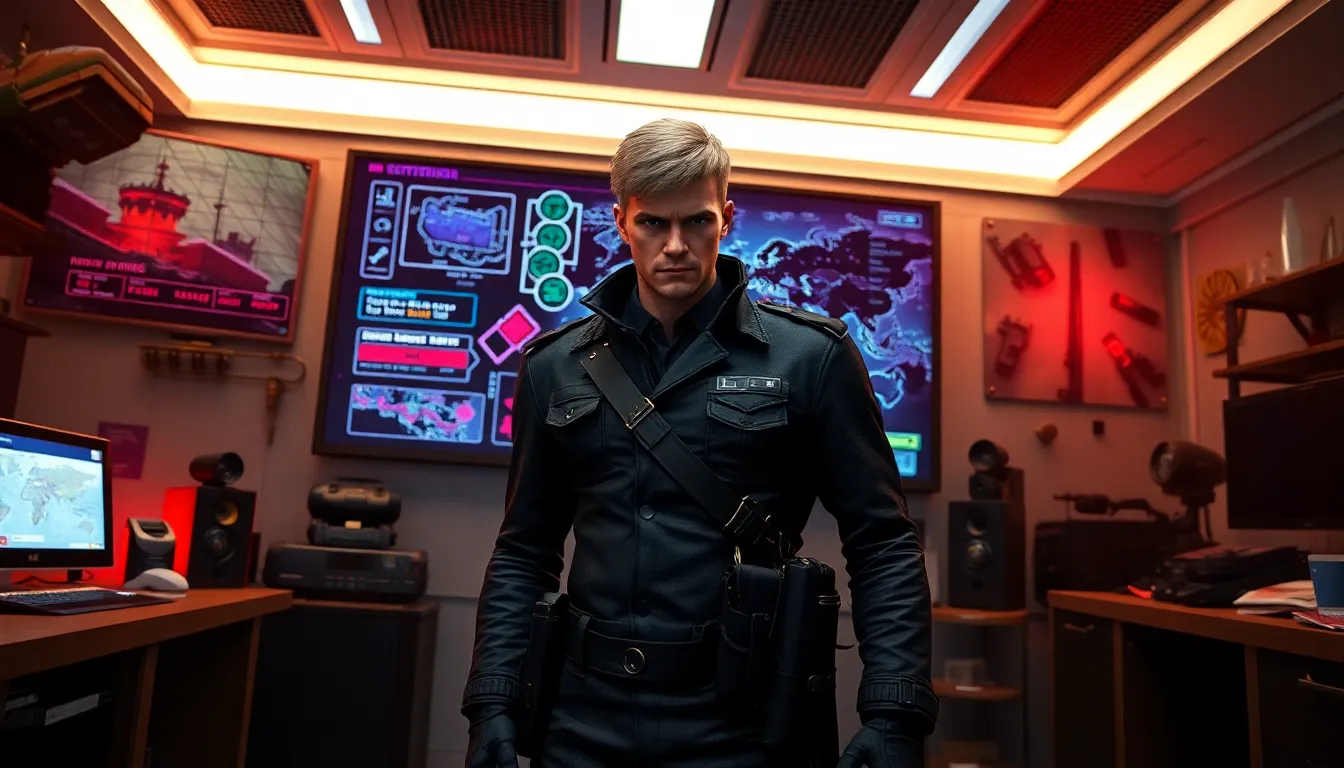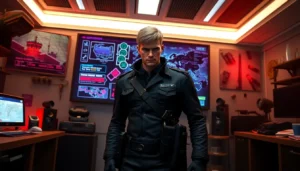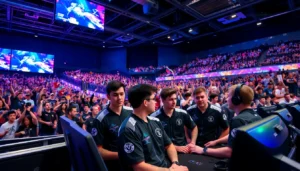Table of Contents
ToggleIf you think RPGs are only about slaying dragons or collecting shiny loot, think again. Enter the eerie yet enthralling world of Wolfenstein RPG, where history takes a bizarre turn, and players are pitted against Nazis armed with supernatural powers. It’s a title that redefined what can be achieved in portable gaming. In this text, we’ll explore its origins, game mechanics, gripping storyline, and the critical acclaim it garnered. So buckle up – it’s going to be a wild ride through the corridors of Wolfenstein.
The Origins of Wolfenstein RPG

A Brief History of the Wolfenstein Franchise
The Wolfenstein series boasts one of the most interesting trajectories in video game history. It launched in 1981 with Castle Wolfenstein, a game that laid the foundation for stealth action mechanics. Fast forward to the 1990s, Wolfenstein 3D blasted onto the scene, essentially giving birth to the first-person shooter genre. With each release, the stakes grew higher, blending historical elements with fictional storytelling.
As RPGs evolved in the early 2000s, the realm of Wolfenstein caught a fresh wave of creativity, particularly noted in Wolfenstein RPG. This title emerged from Phoneix Studios, introducing a narrative-driven experience that merged beloved elements from its FPS predecessors into a turn-based RPG format. The combination of classic storytelling and innovative mechanics created a unique footprint in the series’ long legacy.
Development of Wolfenstein RPG
Developed by a team who wanted to add RPG layers to a franchise known for its pulse-pounding action, Wolfenstein RPG was released in 2008 for mobile devices. This marked a notable first as it made the series accessible to a new generation of gamers. The transition from a graphic-intensive shooter to a mobile RPG was no small feat. The developers made smart choices here, maintaining the core identity of the franchise while embracing new gameplay mechanics that utilized turn-based strategy. This try indeed proved fruitful, as it capitalized on nostalgia while appealing to modern gameplay trends.
Game Mechanics and Features
Character Customization and Progression
One of the most compelling features of Wolfenstein RPG is its character customization. Players navigate the game as William “B.J.” Blazkowicz, an icon in the series. But, customization goes several layers deep: they choose special abilities, upgrade weapons, and even understand skill trees that give unique advantages. This fluid progression system encourages players to think strategically about their choices, making each run feel distinct. In stark contrast to traditional RPGs, players can tailor B.J. to fit their unique playstyle, whether that’s a stealthy approach or a full-on assault.
Combat System and Strategy
Combat in Wolfenstein RPG eschews real-time action for a more tactical, turn-based approach. Although this comes as a shift for fans of the high-octane gameplay inherent in previous titles, it does provide room for strategy and planning. Players find themselves carefully orchestrating moves, enabling them to outsmart opponents rather than solely relying on rapid button mashing. Different enemy types require varied tactics, creating a layered challenge where improvisation leads to victory. Add elements like cover mechanics, different weapon choices, and special abilities to the mix, and players can enjoy a deeply satisfying combat experience.
The Storyline and Setting
Plot Overview and Themes
At its heart, Wolfenstein RPG retains a storyline rich with themes of resistance against tyranny. Set within a dark alternate history where the Nazis wield experimental technology, Blazkowicz ventures into various environments to thwart plans of world domination. While the setting resembles World War II scenarios, the supernatural twist elevates it into a realm where steampunk meets horror. Players are constantly driven forward by the desire to uncover the plot, defeat formidable bosses, and eventually, make a stand for justice.
World-Building and Immersion
The environments are meticulously designed, enhancing the immersive experience. Each area is alive with detail – from the dilapidated ruins of war-torn cities to the high-tech Nazi installations. The atmosphere thickens, with eerie music and ambient sounds guiding players deeper into the narrative. Players will engage in side quests and story arcs that round out the world, leaving them to ponder ethical choices, alliances, and enemy motivations that add depth to the gameplay.
Critics’ Reception and Legacy
How Wolfenstein RPG Compared to Other Titles
Upon its release, Wolfenstein RPG garnered praise for its unique blend of RPG elements within the historically rich framework of the franchise. Critics noted how it diverged from the traditional FPS mold, offering a fresh gameplay experience that both dedicated fans and new players could appreciate. It received positive reviews for its engaging storyline, character depth, and strategic combat, standing out amidst a landscape flooded with more conventional RPGs.
Impact on the RPG Genre
The influence of Wolfenstein RPG extends beyond its immediate acclaim. By blending FPS narratives with RPG mechanics, it paved the way for other developers to explore the same concept, allowing room for creativity and innovation in future titles. In today’s gaming landscape, where hybrid models redefine genre expectations, Wolfenstein RPG stands as a milestone that demonstrated how historical narratives can be coupled with rich gameplay mechanics effectively.




